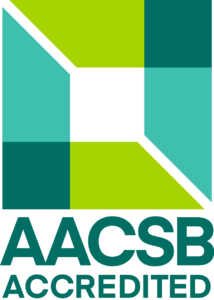Management Science II
- Credits: 5
- Ending: Examination
- Range: 2P + 2C
- Semester: winter
- Year: 3
- Faculty of Economic Informatics
Teachers
Included in study programs
Teaching results
Students will possess following abilities:
- basic knowledge of econometric approach to the data analysis, analysis of economic phenomena and processes,
- basic knowledge of econometric approach to modeling of economic phenomena and processes.
- basic knowledge of econometric approach to the prediction of economic phenomena and processes.
Students will obtain following skills:
- to use basic econometric techniques
- to use the econometric software
- to use the R programming language for econometric analysis
Students will gain following competences:
- practical competences with the application of econometric methods in the data analysis and in analysis of economic problems using R programming language.
Indicative content
1. Characteristics of econometric approach to the data analysis and analysis of economic phenomena. Econometric model. Phases of econometric modeling
2. Two-variable regression model. Deterministic and stochastic part of the model, nature of stochastic term. Standard assumptions of a linear model.
3. Estimation of linear model parameters. Least squares method. General linear model.
4. Model verification. Coefficient of determination. Testing the statistical significance of individual parameters of the model. Interval estimation and hypothesis testing.
5. Qualitative variables and their modeling.
6. Regression on dummy variables. Seasonality, fluctuations, structural breaks, and their testing
7. Functional forms of regression models – log-log model, semi-log models, reciprocal models.
8. Violations of the assumptions of the classical model. Autocorrelation – detecting and implications, solving, generalized least squares method.
9. Introduction to time series analysis. Stationarity of processes and its testing using unit root tests.
10. Co-integration of non-stationary time series, Engle and Granger procedure, error correction models and their estimation.
11. Applications of single equation econometric models.
12. Forecasting. Forecasting error. Confidence interval for the forecasts. Naive forecasts.
13. Forecasting application of econometric model.
Support literature
Lukáčiková, A., Lukáčik, M., Szomolányi, K.: Úvod do ekonometrie s programom Gretl. Bratislava: Letra Edu, 2018.
2. Lukáčiková, A., Lukáčik, M., Szomolányi, K.: Ekonometria 1. Bratislava: Ekonóm, 2013.
3. Lukáčik, M., Lukáčiková, A., Szomolányi, K.: Ekonometrické modelovanie v programoch EViews a Gretl. Bratislava: Ekonóm, 2011.
4. Gujarati, D., Porter, D. Gunasekar, S.: Basic Econometrics. McGraw 5th ed, New York, 2017.
Syllabus
1. Analysis of data and relationships based on the econometric approach. The econometric model. Stages of econometric modelling. Introduction to the econometric approach for identifying and quantifying economic relationships. Definition of model components and the logical structure of econometric analysis. Overview of the modelling stages: specification, estimation, verification and application. 2. Data structure of the linear model with two variables. Assumptions of the linear model. Explanation of the basic linear regression model with one explanatory variable. Presentation of structural and reduced forms of the model. Discussion of standard assumptions such as linearity, independence, homoscedasticity and normality. 3. Estimation of linear model parameters. Ordinary least squares method. General linear model with multiple explanatory variables. Step-by-step introduction to the ordinary least squares estimator and its statistical properties. Interpretation of estimated coefficients and their economic meaning. Extension to multiple regression models and matrix formulation. 4. Model verification. Coefficient of determination. Testing the statistical significance of individual parameters. Confidence intervals and hypothesis testing. Evaluation of model validity using R² and adjusted R². Conducting and interpreting t-tests and F-tests. Construction of confidence intervals and their use in economic inference. 5. Qualitative variables in the econometric model. Introduction of categorical information through dummy variables. Handling binary and multi-category qualitative variables. Interpretation of shifts in intercepts and slopes caused by category changes. 6. Use of artificial variables in the econometric model. Seasonality, fluctuations, structural breaks and their testing. Incorporation of seasonal patterns and irregularities through constructed dummy variables. Identification and testing of structural changes using procedures such as the Chow test. Assessment of the impact of regime shifts on model stability. 7. Functional forms of regression models – logarithmic model, semi-logarithmic models, reciprocal model. Transformation of variables to address nonlinearity and elasticity measurement. Interpretation of coefficients in log-log, log-linear and linear-log models. Use of reciprocal transformations in modelling decreasing marginal effects. 8. Violation of standard model assumptions. Autocorrelation – testing, consequences, remedies, generalized least squares. Detection of autocorrelation using the Durbin–Watson test and its impact on inference. Methods for correcting serial correlation, including model transformation and the use of GLS. Discussion of its consequences for parameter efficiency and hypothesis testing. 9. Introduction to time series analysis. Stationarity and its testing using unit root tests. Differentiation between stationary and nonstationary processes and their economic implications. Understanding trends, seasonality and autoregressive structures. Testing for unit roots using ADF, KPSS and related procedures. 10. Cointegration of nonstationary time series, Engle–Granger procedure, error correction models and their estimation. Analysis of long-run equilibrium relationships between nonstationary variables. Two-step Engle–Granger methodology for detecting cointegration. Construction and estimation of error-correction models linking short-run dynamics with long-run equilibrium. 11. Applications of single-equation econometric models. Use of classical regression models to quantify economic relationships in practical contexts. Examples from macroeconomics, microeconomics and financial analysis. Emphasis on interpretation and decision-making implications. 12. Forecasting. Forecast error. Confidence interval for a forecast. Naive forecasting methods. Construction of forecasts using estimated econometric models for short- and medium-term horizons. Evaluation of forecast accuracy through RMSE, MAE and other metrics. Introduction to naive and benchmark forecasting methods. 13. Forecasting application of an econometric model. Implementation of a fully specified econometric model to forecast real economic indicators. Interpretation of the forecasting results, uncertainty assessment and practical implications. Discussion of model limitations and potential improvements.
Requirements to complete the course
30 % work at seminars and writing of projects
70 % combined final exam
Student workload
5 credits x 26 h = 130 hours
Separate study load for individual educational activities:
student workload: 130 h, participation in lectures 26 h, participation in seminars 26 h,
elaboration of a semester project 52 h, preparation for the final exam 26 h
Language whose command is required to complete the course
Slovak, English
Date of approval: 04.03.2025
Date of the latest change: 06.11.2025

